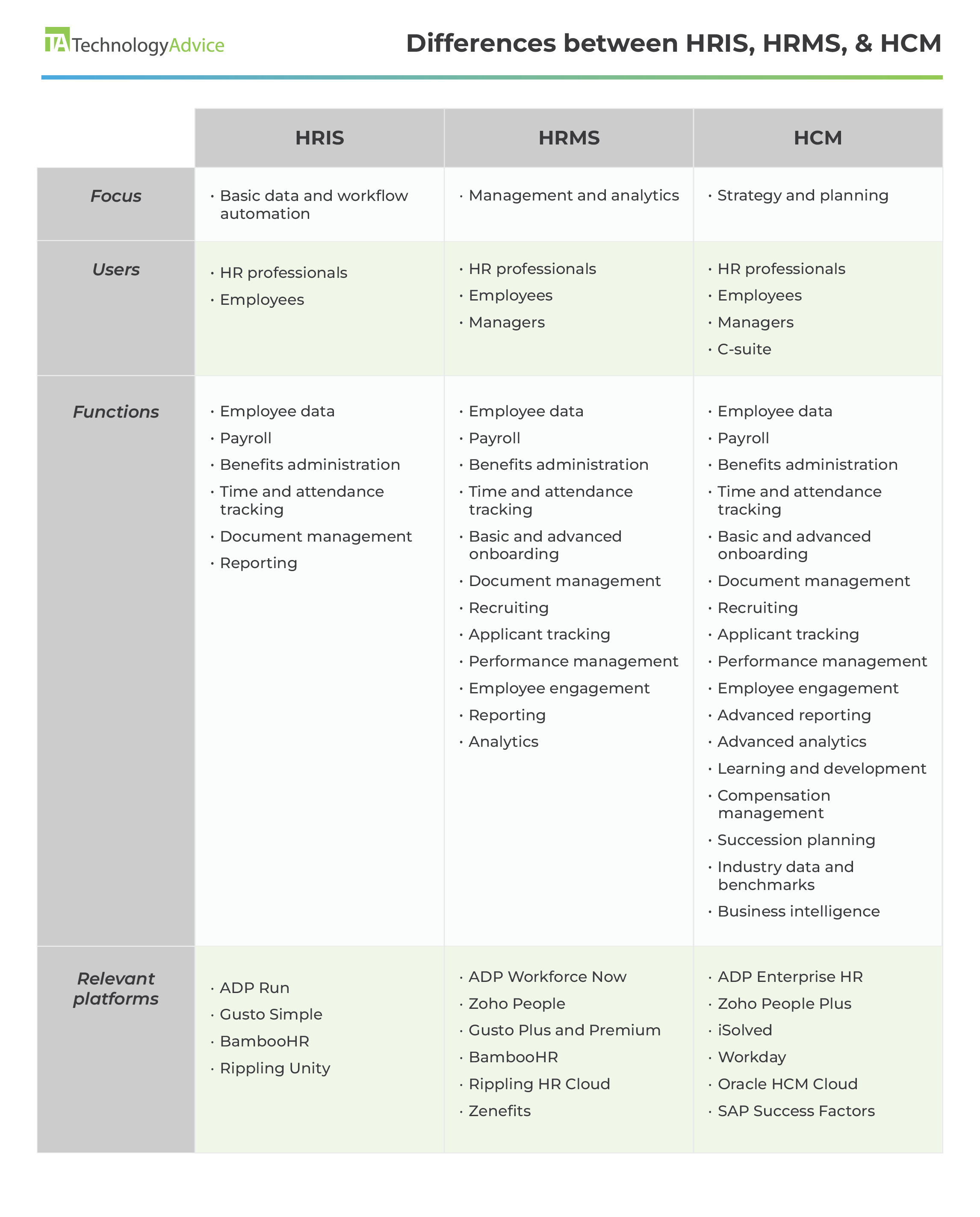In the world of human resources (HR), software users, buyers, and vendors often use the terms human resources information system (HRIS), human capital management (HCM) software, and human resources management system (HRMS) interchangeably.
Though HRIS, HRMS, and HCM overlap in core HR areas that run on basic employee data, HRM and HCM systems offer an increasingly enhanced set of features. A specific software product’s features don’t always align with how the vendor markets or labels itself, making it confusing for buyers to find the level of functionality that’s right for their business.
Refer to our HR Software Guide to explore vendors in all three categories and find a solution that fits your business needs.
What are the differences between HRIS, HRMS, and HCM?

HRIS, HRMS, and HCM aren’t three separate types of software. Rather, they build upon one another to offer increasingly sophisticated features as a company’s needs evolve.
To illustrate, an HCM platform encompasses and expands upon HRIS and HRMS capabilities. It has the capacity to store and track an employee’s basic information when they start a position, thanks to the bedrock of data managed in the HRIS.
Beyond that, the HCM also connects the employee’s performance management data and learning management activities. Managers can then monitor the professional growth of their direct reports over time. This falls within the scope of what an HRMS can do.
At the broadest level, the HCM platform aggregates workforce data from performance and learning management and funnels that information into the compensation management metrics and succession planning modules. HR leadership is vested in this information to ensure employees are getting paid fairly and are following career paths that serve both the employee’s and the organization’s goals.
Also read: Gusto vs Zenefits





